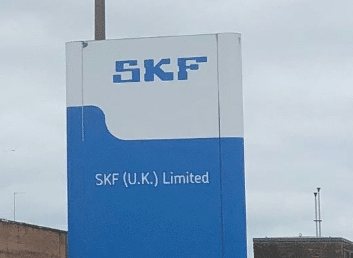
Introduction:
Rail transit systems, encompassing trains, trams, subways, and light rail, serve as vital modes of transportation for urban areas worldwide. These systems demand precision, reliability, and safety to ensure the smooth and efficient movement of passengers. Bearings, integral components of rail transit vehicles and infrastructure, play a crucial role in achieving these goals. NSK and SKF, two leading bearing manufacturers, have played pivotal roles in the rail transit industry. In this comprehensive comparison, we will explore NSK bearings and SKF bearings for rail transit applications, highlighting their unique features, performance, and significance in this essential sector.
Challenges in Rail Transit Applications:
The rail transit industry presents unique challenges, including:
Precision and Safety: Rail transit systems require precise and safe movement to protect passengers and ensure the integrity of the tracks.
High Load Capacity: Rail vehicles must handle heavy loads and dynamic forces while maintaining stability and safety.
Durability: Bearings must withstand frequent starts, stops, and high-speed operation while requiring minimal maintenance.
Low Noise Operation: Reducing noise is critical to passenger comfort and compliance with noise regulations.
NSK Bearings for Rail Transit Applications:
NSK is known for delivering high-performance bearings suitable for rail transit applications. Key features and advantages include:
Precision Engineering: NSK’s precision engineering processes result in bearings with minimal dimensional variations and tight tolerances, ensuring reliable and accurate performance in rail transit vehicles and infrastructure.
High Load Capacity: NSK bearings are designed to handle heavy loads and dynamic forces encountered in rail transit, ensuring stability and safety.
Low Noise Operation: NSK bearings are engineered for quiet and smooth operation, contributing to passenger comfort and adherence to noise regulations.
Longevity: NSK bearings are built for reliability and durability, reducing downtime and maintenance costs in rail transit systems.
Customization: NSK offers customization options to tailor bearings for specific rail transit applications, ensuring optimal performance.
SKF Bearings for Rail Transit Applications:
SKF is also a significant player in the rail transit industry, offering bearings designed for optimal performance in this sector. Key features and advantages include:
Precision Engineering: SKF’s precision engineering processes result in bearings with minimal dimensional variations and tight tolerances, ensuring reliable and accurate performance in rail transit vehicles and infrastructure.
High Load Capacity: SKF bearings are engineered to handle heavy loads and dynamic forces encountered in rail transit, ensuring stability and safety.
Low Noise Operation: SKF bearings are designed for quiet and smooth operation, contributing to passenger comfort and compliance with noise regulations.
Longevity: SKF bearings are designed for reliability and durability, reducing downtime and maintenance costs in rail transit systems.
Customization: SKF provides customization options to ensure that bearings meet the specific requirements of different rail transit applications, delivering optimal performance.
Conclusion:
In the rail transit industry, where precision, safety, high load capacity, low noise operation, longevity, and reliability are paramount, both NSK and SKF have established themselves as trusted providers of high-performance bearings.
The choice between NSK and SKF bearings for rail transit applications should consider specific requirements such as precision, load capacity, noise levels, longevity, and customization needs. By carefully evaluating these factors, rail transit professionals can make informed decisions that enhance the efficiency, safety, and cost-effectiveness of their systems, ensuring the success of this vital sector.
